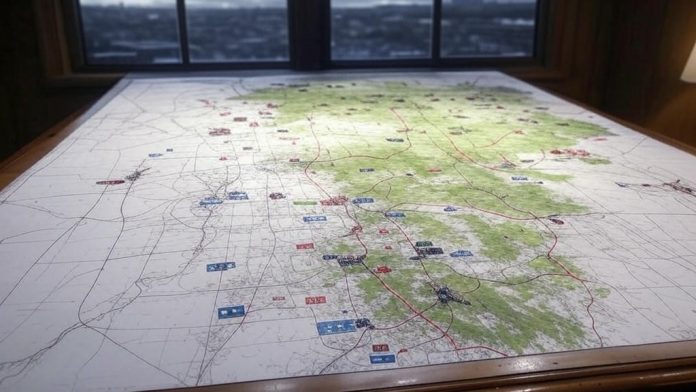In the realm of tabletop gaming, simulating large-scale wars can be both exhilarating and challenging. Whether you’re a seasoned wargamer or an RPG enthusiast looking to add epic battles to your campaigns, having a robust set of rules for abstracted combat systems is crucial. These rules help streamline the complexities of large-scale conflicts, allowing players to focus on strategy and narrative rather than getting bogged down in minutiae. Let’s explore some of the best practices and systems for managing large-scale war strategy in your games.
The Importance of Abstraction
When dealing with large-scale wars, abstraction is key. Instead of tracking every individual soldier or unit, abstracted systems allow you to represent entire regiments, battalions, or even armies with a single token or marker. This approach not only simplifies gameplay but also enables players to make strategic decisions that affect the broader conflict.
For example, systems like Axis and Allies or Kingdoms and Warfare use abstracted combat mechanics to simulate large-scale battles. These systems often involve a strategic map where players move units around to generate encounters, affecting the overall battle without determining every detail .
Balancing Strategy and Tactics
One of the challenges in designing rules for large-scale war strategy is balancing the macro-scale (strategic) and micro-scale (tactical) elements of the game. Players should feel that their strategic decisions have a significant impact on the battlefield, but they should also have opportunities for tactical engagement.
Games like Reign and Burning Empires offer a mix of abstracted mechanics for the background of the war and more detailed battle mechanics for when characters get involved. This dual approach allows players to experience both the grand strategy of commanding armies and the personal heroics of individual combat .
Simplifying Combat Resolution
To keep large-scale battles manageable, it’s essential to simplify combat resolution. Instead of resolving each attack and defense roll, abstracted systems often use massed attack rolls or aggregate hit points to represent the overall health and morale of a unit.
For instance, the Player’s Handbook combat rules can be scaled up to model larger conflicts with dozens or hundreds of soldiers on either side. In these systems, an attack roll might represent a massed attack from twenty allies, and hit points could signify not just an individual’s health but also casualties and fatalities among a cohort .
Incorporating Narrative Elements
While large-scale war strategy focuses on military maneuvers and combat, incorporating narrative elements can enhance the overall gaming experience. Players should have opportunities to make meaningful decisions that shape the story, such as negotiating alliances, conducting espionage, or engaging in diplomacy.
Systems like GURPS Mass Combat and Stars Without Number provide rules for operational and strategic-scale play, allowing players to engage in both military and political aspects of war. These systems encourage roleplaying and storytelling, making the large-scale conflict feel more immersive and dynamic .
Adapting Existing Rulesets
If you’re looking to incorporate large-scale war strategy into an existing RPG campaign, you don’t necessarily need to adopt an entirely new ruleset. Many RPGs can be adapted to handle large-scale conflicts with a few modifications.
For example, you can use a series of skill checks filled in with good storytelling to represent large-scale combat. Instead of rolling for each soldier’s actions, players can make strategic decisions that influence the outcome of the battle. This approach allows you to maintain the core mechanics of your RPG while adding the epic scope of large-scale warfare .
Conclusion
Designing rules for abstracted large-scale war strategy involves balancing abstraction, strategy, tactics, and narrative elements. By simplifying combat resolution, incorporating meaningful decisions, and adapting existing rulesets, you can create a engaging and immersive large-scale war experience for your players. Whether you’re commanding armies on a strategic map or leading heroes into battle, these principles will help you master the art of large-scale war strategy in your tabletop games.

